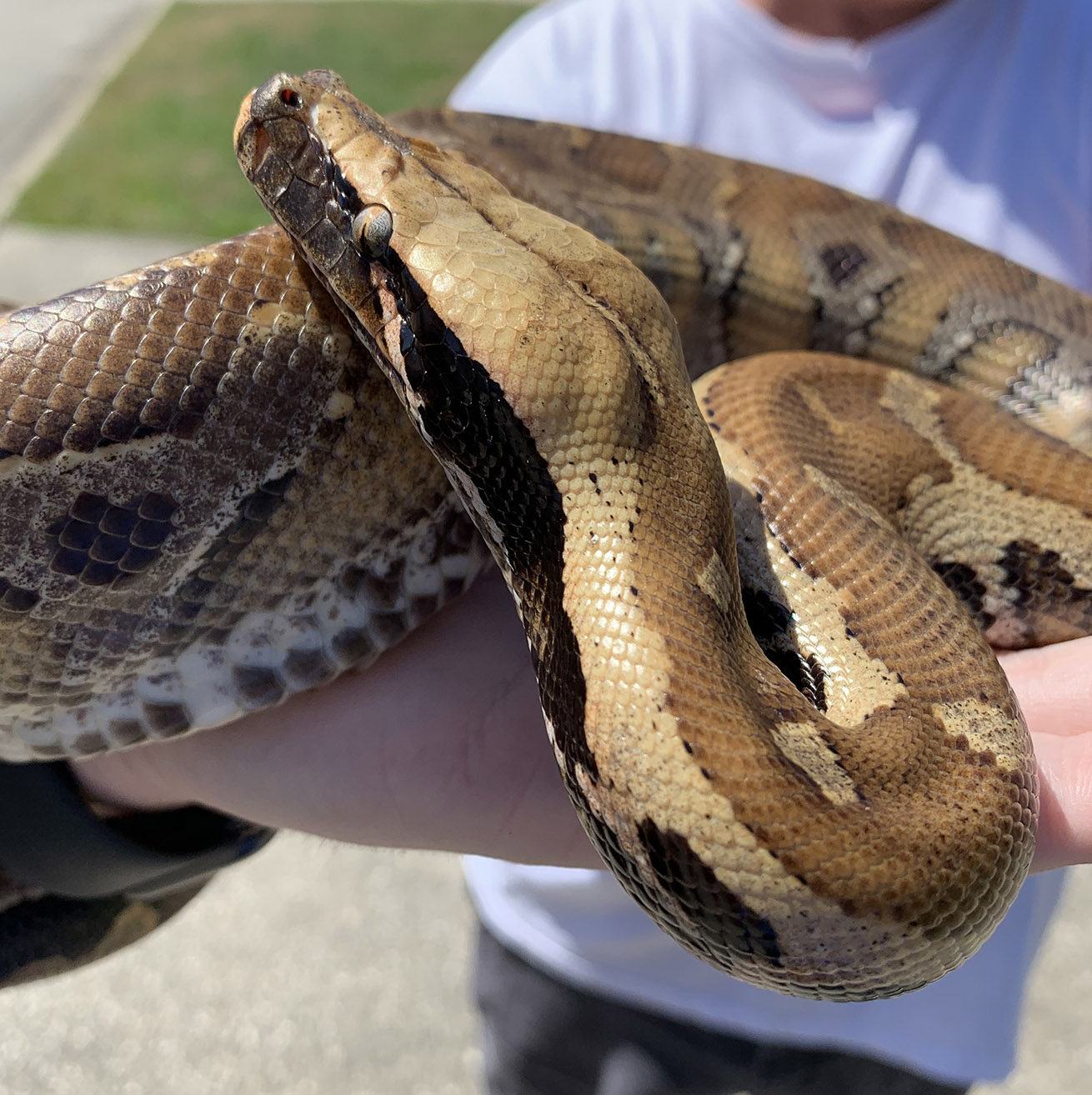
Difficulty: Intermediate
- Size: This is a large, heavy-bodied species and requires a custom enclosure size
- Humidity: This species has higher humidity requirements
- Heavy-bodied: When handling this snake, ensure its weight is well-supported
Adult Size
- Male: 3 to 5 feet (0.9 to 1.5 meters)
- Female: 4 to 6 feet (1.2 to 1.8 meters)
Life Cycle
- Average Lifespan: 20-25 years
- Oviparous: Egg Laying
Enclosure Size
- 48x24x24 inches minimum for an adult
Husbandry Values
- Temperature:
- Ambient: 78-80°F (25.6-26.7°C)
- Basking: 85-90°F (29.4-32.2°C)
- The basking area should never exceed 95°F (35°C)
- Humidity: 60-70% (70-80% while in shed)
- Lighting: No specific requirements
- UV Light can be beneficial
Diet
- Carnivore: Rats or Mice. May enjoy chicks
Behavior Notes
- Burrower: This snake may burrow and completely bury itself
- Temperament: Captive bred species are naturally docile & curious
- Ambush Predator: This species hunts by surprising and wrapping its prey
***These care sheets assume that you understand the basics of snake care & husbandry.
If you are a new snake owner, it is recommended that you read our articles on general reptile care and then fine tune the requirements for the specific species you are interested in.
Climate & Husbandry
Blood pythons are found in the western Malaysia, eastern Sumatra, and various islands in the Strait of Malacca. They are found in tropical rainforests, swamps and marshlands.
Feeding
This species is carnivorous and feeds on rodents. Feed a rodent that is big around as the snake’s girth an average of once every 7-10 days, and monitor the snake’s weight and body condition—as your blood python reaches adulthood, you may feed less frequently to avoid obesity.
Adult snakes may do well eating about every 2 weeks, particularly on larger food items. Because this snake is heavy-bodied and can take larger food items, you may also want to wait 48 hours (instead of the usual 24) before handling for larger meals.
This snake does well feeding at night and on a schedule. For individuals with a particularly strong feeding response, offering a plate at a distance and allowing the snake to discover the food may be useful.
This snake may wait awhile to defecate, and a soak in a shallow, tepid (81-86F) bath once every 7-14 days may be useful to encourage regularity.
Similar Species
“Short-tailed pythons” may refer to any of three species:
- P. curtus- the sumatran short-tailed python
- P. breitensteini- the borneo short-tailed python, or
- P. brongersmai- the red short-tailed python or blood python
These species can vary widely in color patterns and somewhat in size. However, they are all large, heavy-bodied snakes and have similar humidity and care requirements.
References
- Sumatran Short-tailed Python, IUCN Red List: https://www.iucnredlist.org/species/192244/2060581
